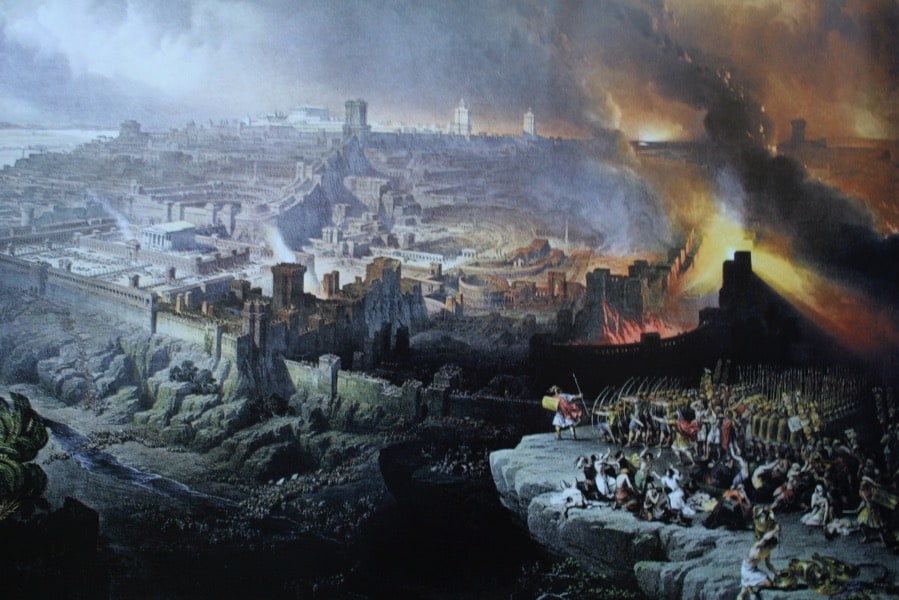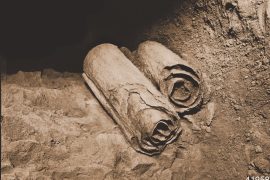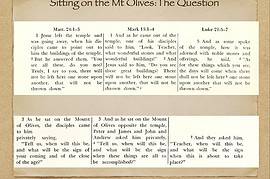I have been fascinated with the “Year of the Four Emperors” for since graduate school days. I got convinced years ago, reading S. F. F. Brandon’s classic work, The Fall of Jerusalem and the Christian Church: A Study of the Effects of the Jewish Overthrow of 70 AD on Christianity, that what transpired from Caligula up through the First Jewish War (66-73 CE) was a real key to reading the letters of Paul as well as the New Testament gospels. I will be putting this book on my Blog “Bookshelf” this week, and I highly recommend it to all of you.

Here are the closing paragraphs of my book, Paul‘s Ascent to Paradise:
Beyond this there is little one can say. I think the texts I examined in the previous chapter can shed light on Paul’s experience. Broadly speaking he presents a Hellenistic way of salvation—a particular scheme of apotheosis, or “immortalization,” with certain apocalyptic peculiarities. The broad contours of his religious experiences—epiphany, the reception of oracles, visions, the journey to heaven, secret revelations—these are all well known to us, especially from the Greek magical papyri, the Hermetic texts and various forms of esoteric Judaism of the period. Add to that his specific expectations regarding his mission to the Gentiles, the conversion of Israel, and the imminent Parousia of Jesus as cosmic Lord, and you have it—his own particular vision and version of that most characteristic Hellenistic hope–escape from mortality. And yet it is those very apocalyptic “particulars” that make Paul really Paul. His was not a scheme of salvation for any place or for all time. Although he has endured and been appropriated in many different ways over the centuries, from the standpoint of the history of Judaism, he belongs in those crucial years of hope and promise, before the terrible days of August, 70 CE, when many such dreams came to an end with the destruction of Jerusalem and the bitter and crushing end of the Jewish revolt against Rome.
For Paul the “appointed time” of the End had drawn very near (1 Corinthians 7:26, 29, 31). How near, it is difficult to say, but he wrote that in the early 50’s C.E., If he, like others in the movement before 70 CE, expected the fulfillment of Daniel 11 and 12, with the “desolating sacrilege” set up in the Temple at Jerusalem, then events such as Gaius’s attempt to have his statue placed there (41 CE) would have fueled his apocalyptic speculations.[1] Apparently his plans to go to Spain never worked out, due to his arrest under Nero (Romans 15:28), so his grand hope of bringing the bulk of Israel to accept Jesus as Messiah through his Gentile mission became more and more hopeless. By 70 CE it was becoming increasingly difficult to maintain any immediate hope for the “redemption of Israel.’’[2] Others could pick up the pieces in various ways, as Jacob Neusner and his students have demonstrated so clearly, but Paul was gone and what emerged in his name, even in the short decades after 70 CE , was the beginning of a new and very different story.
I am more and more convinced that the history the emergence of the “Jesus Movement” into something that might be called “Christianity,” all centers on the years before, during, and after Nero–and into the reign of Vespasian–and finally his two sons Titus and Domitian.
Mark 13, often referred to as the “Synoptic Apocalypse” or the “Jesus Apocalypse,” is our earliest running “commentary” on the “appointed time of the End,” based on Daniel 11:35-12:4, and how it was “rewritten” and overwritten in the post-War period by first Matthew and then Luke. I will be covering these ideas in my next video in the ongoing Youtube series dealing with “Interpretations of Bible Prophecy from Ancient to Modern Times.” I have already covered the core visionary and dream texts of Daniel–and how they were appropriated in late 2nd Temple times. It also comes up in my “Jesus and the Dead Sea Scrolls” on-line course–which was just released last week–and I invite you to enroll. I will be having monthly Zoom meetings with students in that course, beginning this month of October. The Dead Sea Scrolls group, James the brother of Jesus and those followers connected to Jerusalem, and “Rabbinic” Judaism were all fundamentally transformed by these events.
If you don’t have either book–Brandon or mine–I recommend. This connects to Pompeii, the book of Revelation and its three stages of editing, and much more, see my posts “The Destruction of Pompeii and the New Testament Book of Revelation,” and “Here it is at Last: A Pre-Christian Version of the Book of Revelation,” I want to share with you all my latest analysis. My next book is titled: Jesus Betrayed: How Christianity Took a Different Path, which will deal with this overall subject. Paul is part of the transformation, but ironically, in the 50s and 60s CE, he is still thoroughly part of this apocalyptic world of signs and expectations
Stay tuned…
As an Amazon Associate I earn from qualifying purchases with no extra cost to buyers









Comments are closed.